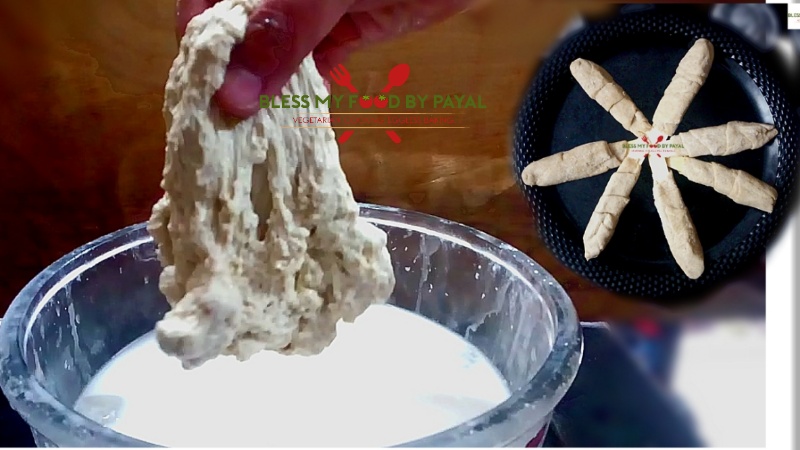
17 Apr How to make raw Soya Chaap Sticks at home?
Last Updated on June 29, 2023 by blessmyfoodbypayal
raw soya chaap | homemade raw soya chaap | how to make soya chaap sticks at home with step wise pictorial and video method.
raw soya chaap | homemade raw soya chaap | how to make soya chaap sticks at home is one of the most loved street food recipe, especially, in northern India. those who eat non-veg says that the taste and texture of chaap is as good as chicken. it is to be noted that this is the post with respect to making of soya chaap which is “raw”. how to further cook a raw chaap has been shared in another post.
Editing this recipe again for the third time on 10-02-2019. know the reasons, below, which includes honest confessions too.
This recipe of raw soya chaap always remained a challenge for us because we have made about 8 experiments on this recipe in the span of 3 years, which resulted from failure to average results.
First experiment with raw soya chaap
when we updated the recipe of soya chaap for the first time on 17.04.2016, it was no where on the internet so no prior knowledge was available with us.
Also there was not any one surrounding us who knew that how to make raw soya chaap. that was our first experiment which we had learned from one of the food groups on social media. That chaap was made of wet soya and maida.
It received lots of love from all over the world and people started making it.
With the passage of time, we started receiving the comments with less appreciation but more complaints.
Some wrote that their chaap turned too much hard. but the common complaint was that the maida in the chaap remains uncooked and has a raw taste on eating. it was sad to read such comments and we started thinking of improving the recipe.
Second experiment with raw soya chaap
As the major complaint was with respect to the raw maida in the chaap, we thought of removing the maida from the recipe, which was used in huge quantity in the first experiment, and second recipe was developed in which just few spoons of maida was used.
This second experiment/recipe was updated after editing the first one on 03.11.2017.
In this second experiment, it was obvious that there could be no complaints of raw maida because maida was hardly used. but we started receiving comments that this chaap is not at all like that of market’s chaap as it didn’t have that elastic and stretchy consistency.
Those who have already eaten chaaps must know that chaap has a gooey stuff, which was missing in our second experiment.
And our journey of making raw soya chaap better remained continuous. We went to many professionals to learn the correct recipe of raw soya chaap. actually we didn’t know any professional in this field, so we went to the shop keepers who sell raw soya chaap and also to those who sell cooked soya chaaps.
Everyone told us that they buy it readymade so they don’t have the knowledge that how the raw one is made. may be either they actually didn’t know or didn’t want to share with us. alas!
However, in the year 2017, one shopkeeper told us that soya flour is not used and raw soya chaap is made by stretching the maida only but he doesn’t know more about it in detail. We thought that ‘soya chaap without soya’…no ways, so he was of no help to us.
In December, 2018, we saw the pictures of few packages of raw soya chaap on internet in which the ingredients were mentioned. it included 60% soya flour, 40% maida, salt and water. but on some of the packages, whole wheat flour was also mentioned. Quite confusing for us.
We decided to experiment again but also decided not to edit the blog post until perfect chaap is made.
Third, Fourth, Fifth & Sixth experiment with raw saya chaap
In our third, fourth, fifth and sixth experiment, we made one batch of raw soya chaap with soya flour along with maida & another with whole wheat flour.
In the first two experiments, we added soya flour in extra ratio than the other flours. The taste was good but there was no gooey in the chaaps again.
Then fifth and sixth experiment was made by mixing all the three flours with soya flour in larger quantity than the other two flours but problem remained the same. Taste of chaap was improved but with no gooeyness which is the soul of chaaps and that is the only reason for its being loved by people.
The actual trouble was with respect to the presence of correct ratio of gluten in the chaaps made so far. The gooeyness in the chaap is due to the presence of gluten and soya flour is gluten free whereas maida and wheat flour, both, has gluten in it. But on mixing both soya flour and other flours, the quantity of gluten decreases lower to the required degree.
Seventh Experiment
In our seventh experiment, which was in a very very casual mood, we took a big dollop of dough, which always remain there in our refrigerators for making chapatis, and experimented with it.
In this experiment, we made just one single chaap. on cooking this, it was like Oh my God. It was 99.9% close to the market chaaps. made just and just with the dough of whole wheat flour and no soya flour, it was perfect chaap but was it soya chaap ? Somewhere no. How a chaap can be called soya chaap without soya !
Recently, we met a shopkeeper who told us that the branded soya chaaps do contain soya but the local manufacturers made soya chaaps only with maida.
It was surprising for us but we recollected the words of that shopkeeper who told us in 2017 that soya chaaps are made without soya and only maida.
We also related his words with our seventh experiment in which we made one single chaap with whole wheat flour only and it was perfectly made.
It was a complete state of confusion for us that how to develop this recipe. to make the perfect recipe of raw soya chaap, we have to skip the soya, and if we skip the soya, how it will be named as soya chaap.
Eighth experiment with raw soya chaap
To win over this confusion, we made eighth experiment. we focused more on wheat and all purpose flours, but also added bit of soya to make it soya chaap & not just chaap. and this is perfect raw soya chaap for us with amazing taste and yes, that gooeyness, the real star is a chaap recipe.
Hence this recipe is very very special to us because it is the outcome of so many discussions with professionals, extensive study on internet and food groups (though none was helpful), number of experiments from zero to average results and editing the recipe in blog already twice.
Really, it took us 3 years to understand & believe that local soya chaap is actually not made of soya.
.. thank you dear readers for traveling those 3 years with us through this post.
Finally let’s begin with the recipe of raw soya chaap edited for the third and last time for sure.
step wise pictorial method of raw soya chaap
(do watch attached video to understand the method in a better way.)
- take a big bowl and place a sieve over it. add whole wheat flour, all purpose flour and salt in the sieve.
- sieve the flour into the bowl. mix the flour so that everything incorporates together very well.
- start adding water gradually and knead the flour into a dough.
- keep on kneading the dough for at least 15 to 20 minutes. more the better.
- cover the dough with a kitchen towel and place a lid on the bowl. place the dough for rest for at least one hour on kitchen shelf (in winters) or in refrigerator (during summers).
- after one hour, take the bowl back and uncover it. knead the dough again for a minute.
- pour lots of very hot water over the dough. water should be as much hot as your hands can bare and the quantity of water should be as much so that entire dough drowns in it.
- let the dough remains in water for 10 seconds.
- take the dough out and start squeezing & twisting it with your hands. you have to squeeze out the water from the dough.
- when you have squeezed out the water from the dough, again put the dough back in same water and let it remain there for 10 seconds.
- repeat this process again and again for 10 minutes. means… put dough in water for 10 seconds, bring out, squeeze & again in water for 10 seconds & so on and on. during these 10 minutes, this process of bathing the dough will take between 12 to 15 rounds. and the colour of water will also change to white.
- after 10 minutes and when about 12 to 15 rounds of dough bath will complete, pass the water carrying dough through a sieve so that water drains out and dough gets collected in the sieve.
- in the sieve too, squeeze the dough to take out maximum water from it.
- transfer the dough back to the bowl.
- now pour chilled water in the bowl carrying dough to the level dough completely sinks in.
- add some ice cubes to make the water extra chilling.
- this time again, you need to repeat the same process what you did in hot water. means… place dough in water for 10 seconds, bring it out, squeeze & again in water for 10 seconds & so on. every time press the dough with pressure so that all water squeezes out of it. each time you put the dough in water and then squeeze, the quantity of dough will keep on decreasing and the colour of this water too will turn white. no issues.
- after 8 to 10 minutes, you will observe that dough will start coming together and becoming like a mass.
- keep the process on and further in 2 to 3 minutes, dough will become stretchy. on pulling, dough should be elastic.
- when such consistency of dough is attained, stop the bathing process of dough. make sure you have squeezed the dough very well and no water is dripping out of it.
- transfer dough in another bowl. Make sure this bowl should be dry.
- add 2 tbsp of soya flour over the dough.
- knead the dough well for a minute so that soya flour incorporates well. you can add more flour if you feel that dough is still too much sticky.
- dust you hands with soya flour, particularly finger tips.
- take a small ball size dough from the entire dough.
- stretch it a bit with both of your hands vertically.
- take an ice cream stick and start rolling the dough across the stick starting from one inch ahead of bottom of stick to the top and back. press the rolled chaap with your palm so that dough sticks to the stick properly (see video for better understanding).
- finish the dough likewise. you will be able to make 5 to 6 chaaps out of this dough. our’s were 5.
- transfer all the chaaps in a zip lock bag, lock bag properly and place it in freezer. no worries if you don’t have zip lock bag. take a clean polythene bag, place all chaaps in it, tie a rubber band & then place it in freezer.
your raw soya chaaps are ready.
you can cook the Raw Soya chaap with the easy method given below in three ways:-
NOTE
Instead of in the ratio of 50 : 50, you can use wheat flour or all purpose flour completely.
How to make soya chaap sticks at home – recipe card

Homemade raw soya chaap
Ingredients
1 cup = 200 ml
- 2 cups whole wheat flour / atta
- 2 cups all purpose flour / maida
- 1 tsp salt
- 2 tbsp soya flour (plus little more for dusting)
- a big bowl of hot water
- a big bowl of cold water
- one tray of ice cubes
you also need
- 5-6 ice cream sticks
- zip lock bag or a polythene bag with rubber band
Instructions
- take a big bowl and place a sieve over it. add whole wheat flour, all purpose flour and salt in the sieve.
- sieve the flour into the bowl. mix the flour so that everything incorporates together very well.
- start adding water gradually and knead the flour into a dough.
- keep on kneading the dough for at least 15 to 20 minutes. more the better.
- cover the dough with a kitchen towel and place a lid on the bowl. place the dough for rest for at least one hour.
- after one hour, take the bowl back and uncover it. knead the dough again for a minute.
- pour lots of very hot water (which hands can bear) over the dough.
- let the dough remains in water for 10 seconds.
- take the dough out and start squeezing & twisting it with your hands. you have to squeeze out the water from the dough.
- when you have squeezed out the water from the dough, again put the dough back in same water and let it remain there for 10 seconds.
- repeat this process again and again for 10 minutes.
- after 10 minutes, pass the water carrying dough through a sieve so that water drains out and dough gets collected in the sieve.
- in the sieve too, squeeze the dough to take out maximum water from it.
- transfer the dough back to the bowl.
- now pour chilled water in the bowl carrying dough.
- add some ice cubes to make the water extra chilling.
- this time again, you need to repeat the same process what you did in hot water. means... place dough in water for 10 seconds, bring it out, squeeze & again in water for 10 seconds & so on.
- after 8 to 10 minutes, you will observe that dough will start coming together and becoming like a mass.
- keep the process on and further in 2 to 3 minutes, dough will become stretchy. on pulling, dough should be elastic. stop the process here.
- transfer dough in another bowl. Make sure this bowl should be dry.
- add 2 tbsp of homemade soya flour over the dough.
- knead the dough well for a minute so that soya flour incorporates well.
- dust you hands with soya flour, particularly finger tips.
- take a small ball size dough from the entire dough.
- stretch it a bit with both of your hands vertically.
- take an ice cream stick and start rolling the dough across the stick starting from one inch ahead of bottom of stick to the top and back. press the rolled chaap with your palm so that dough sticks to the stick properly.
- finish the entire dough likewise.
- transfer all the chaaps in a zip lock bag, lock bag properly and place it in freezer.
- your raw soya chaaps are ready.
Notes
if any queries, ask freely
Recipe, for the purpose of blog, developed by

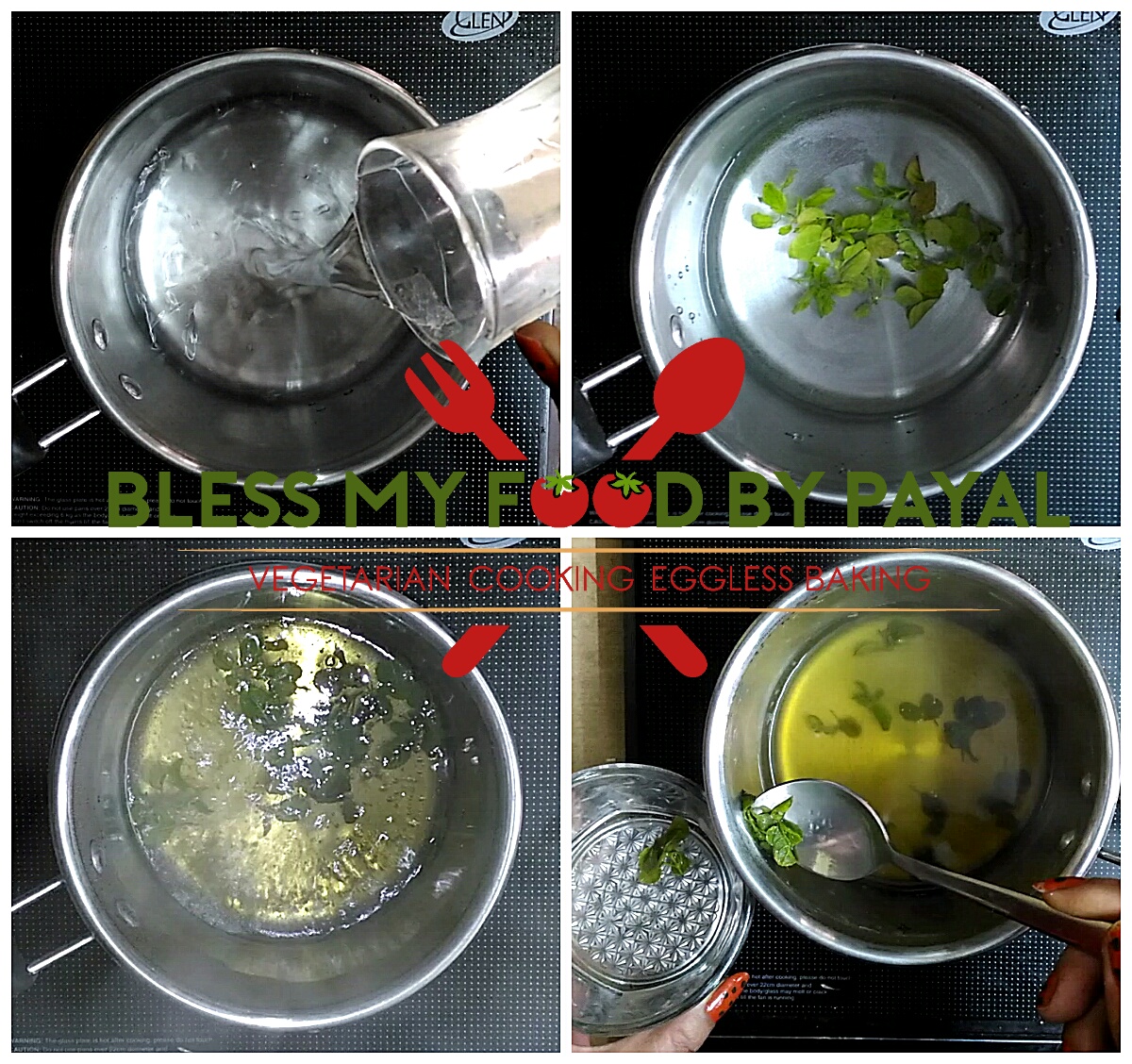

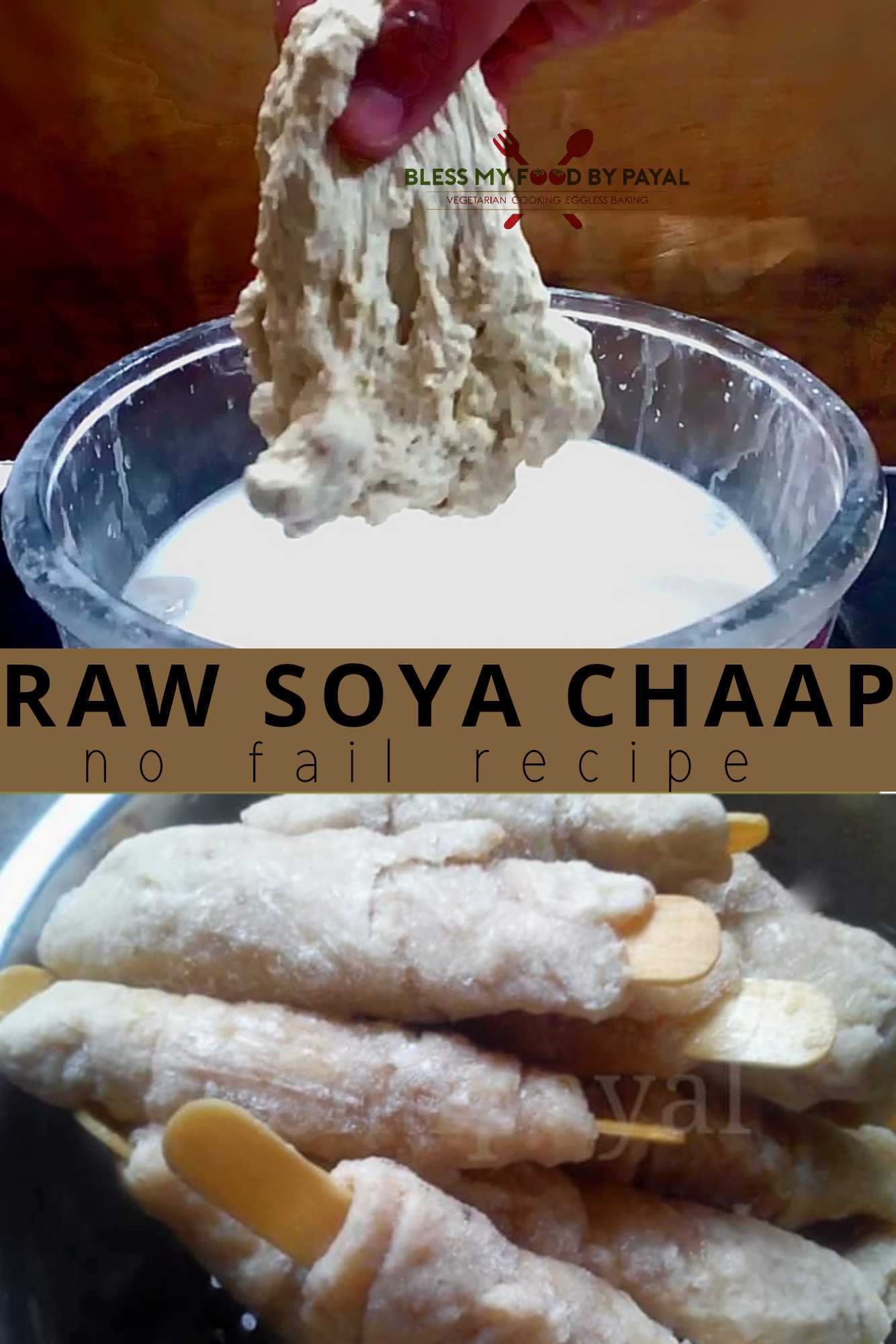
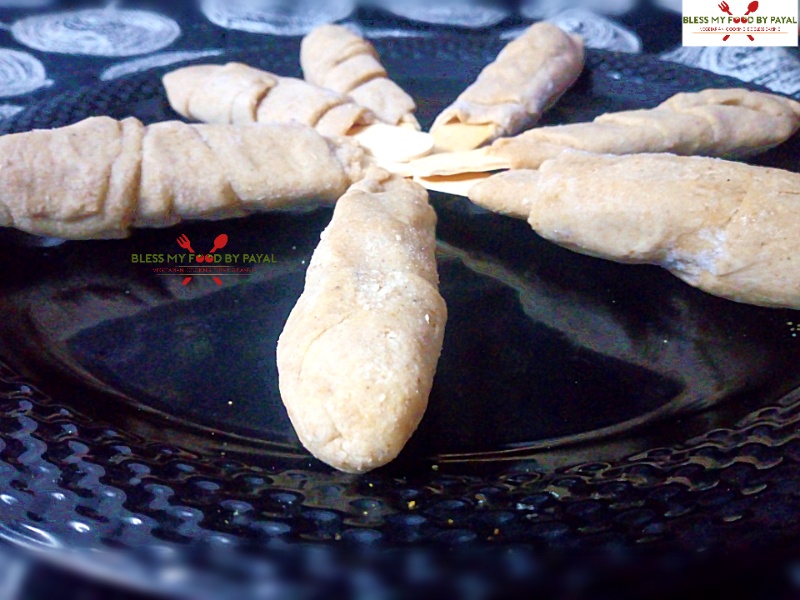
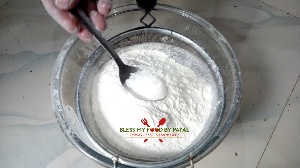
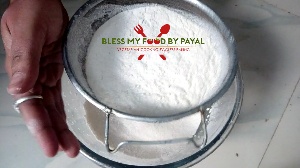
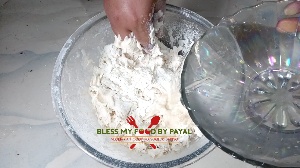
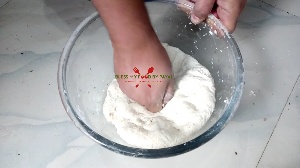
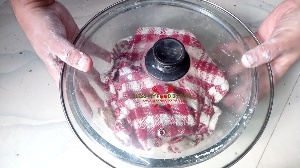
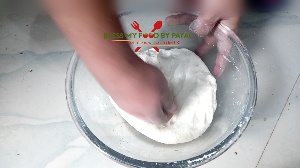
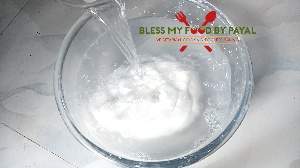
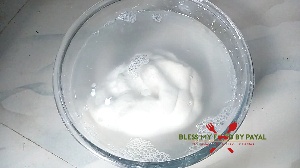
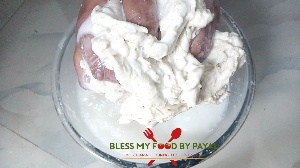
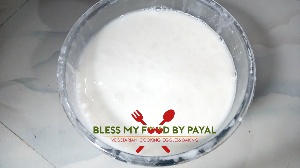
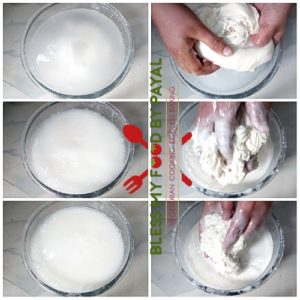
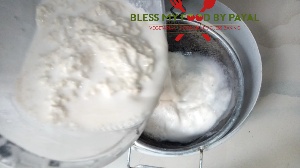
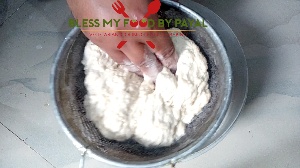
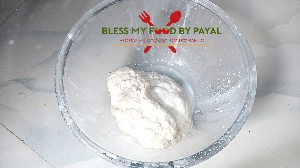
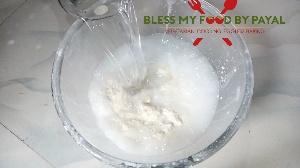
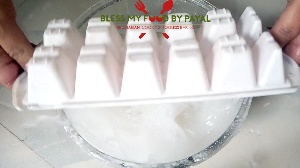
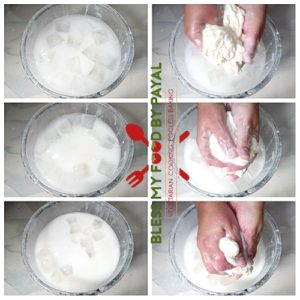
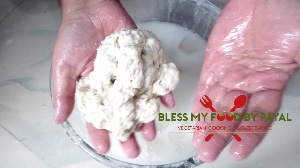
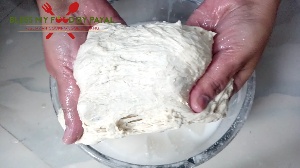
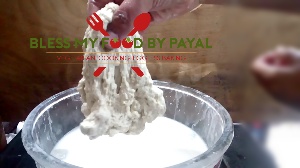
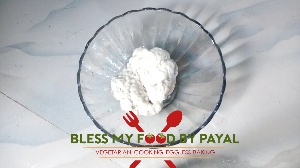
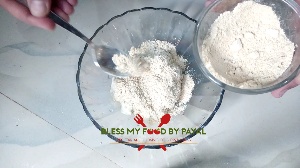
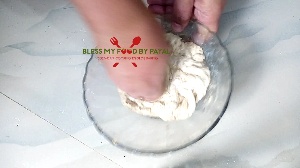
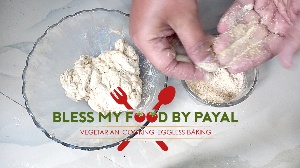
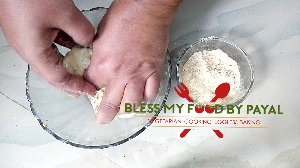
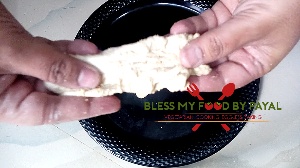
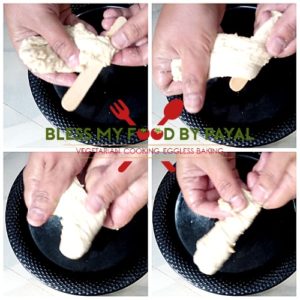
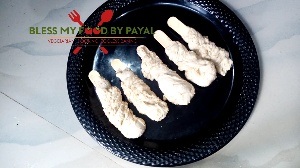
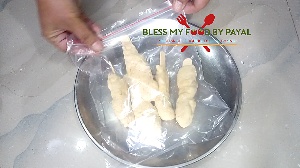
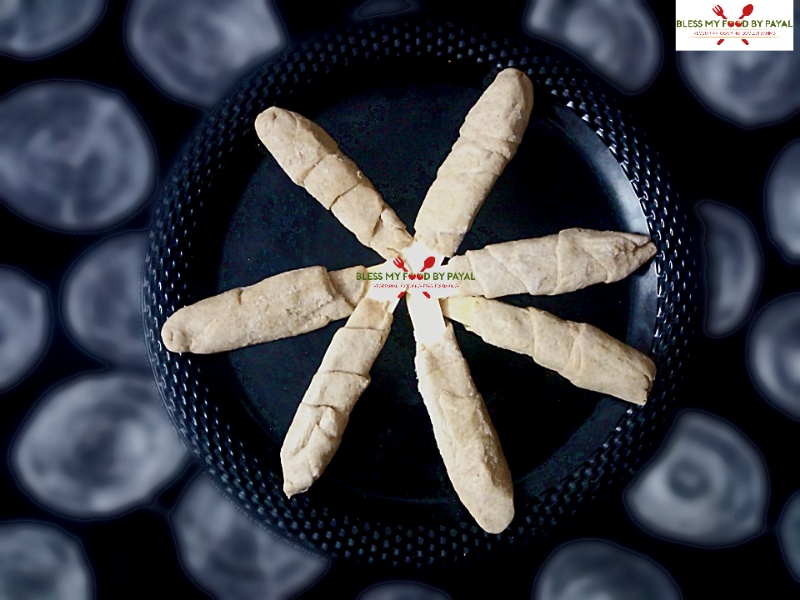
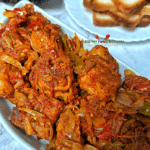
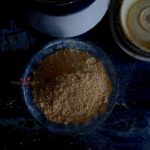

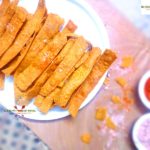

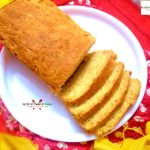



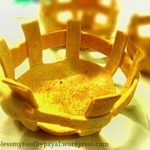
bandar judi bola
Posted at 10:19h, 05 MarchHi еveryone, it’s my first visit at this web site, and paragraph is really fruitful designed
for me, keep up posting tһese types of articles.
blessmyfoodbypayal
Posted at 19:40h, 06 Marchthank you. keep visiting..
Rajdeep chawla
Posted at 06:22h, 31 MarchThis is my first visit your article on raw soya caap is wonderful.i am looking for this recipe from a long time.. thanks you so much..can you please tell that what is the right recipe of momos dough .so it remains white after cooking.. normal it turs yellow after cooking..
blessmyfoodbypayal
Posted at 17:32h, 02 AprilGlad you loved it. Soon we will come with the recipe of momos. Stay tuned.
onesies for teens
Posted at 10:35h, 14 AugustThanks for any other excellent article. The place else may anyone get that kind of information in such a perfect manner of writing? I have a presentation subsequent week, and I am at the look for such information.
blessmyfoodbypayal
Posted at 03:44h, 29 AugustThanks a bunch
Mystic Man Beard Oil Price
Posted at 14:25h, 20 JuneI like this web site because so much utile stuff on here :D.
Climadex ME
Posted at 10:18h, 20 JuneHowdy! Someone in my Myspace group shared this site with us so I came to look it over.
I’m definitely loving the information. I’m bookmarking and will be tweeting this to my followers!
Great blog and great design.
blessmyfoodbypayal
Posted at 05:14h, 10 JanuaryThanks a million Neha for your words of appreciation.
I have already been to your blog and that’s really amazing. The recipes are well drafted and pictures are beautifully captured. Best wishes for the future.
Freda
Posted at 23:23h, 05 JanuaryPerfectly done!
blessmyfoodbypayal
Posted at 04:04h, 06 JanuaryThank you so much…
Anonymous
Posted at 11:18h, 23 Octoberthanks for motivation for small scale bussiness
Payal Bali Sharma & Shailender Sharma
Posted at 20:03h, 03 NovemberWe are honoured. Thank you.
Nimesh sharma
Posted at 08:12h, 21 AugustThanx a lot payal & shailendra
Payal Bali Sharma & Shailender Sharma
Posted at 10:12h, 21 AugustYou are welcome Nimesh
Raj
Posted at 11:17h, 03 AugustHello
Tried the recipe. My chaap turned out too soft and sticky. It tasted like boiled aata. Please let me know where am I going wrong. If dough isn’t stiff can it happen.
Payal Bali Sharma & Shailender Sharma
Posted at 20:05h, 03 NovemberThe recipe has now been revised for better results. Please have a look.
Koushik Bhattacharyya
Posted at 18:19h, 02 AugustDear Payel Ji,
How much time we can srore the raw chaap in refridgerator and outside refridgerator? pls guide.
Payal Bali Sharma & Shailender Sharma
Posted at 17:08h, 02 AugustKoushik Ji,
Every time we made these chaaps consumed within 1 to 2 days. Only for once we cook the raw chaap after 10 days and it was still very good. No practical idea beyond 10 days.
In all cases you can’t store it outside freezer beyond few hours. Even the sellers in the market store these chaaps in their freezers.
Koushik Bhattacharyya
Posted at 17:21h, 03 AugustThanks a lot Payel Ji for your valuable advice.
Rahul Bhatnagar
Posted at 09:04h, 01 MayHello Payal Ji
I have tried with 30% soya flour and 70% choker free wheat flour. I don’t intend to use maids at all. Problem is that the hardness is very high after frying. I have followed the process as per your procedure.
Please suggest what am I missing or do I need to add any other thing as ingredient.
Jitendra Bhavsar
Posted at 12:25h, 24 AprilA Very good recipe worth…trying for vegetarians like we.
Payal Bali Sharma & Shailender Sharma
Posted at 12:38h, 14 AugustThanks for the appreciation.
meenakshi saxena
Posted at 11:14h, 09 FebruaryHi payal ji….. thanks ….. thanks alot…. to giving this receipe
Payal Bali Sharma & Shailender Sharma
Posted at 13:03h, 09 FebruaryYou are most welcome Meenakshi..
Dharmendra Sharma
Posted at 11:56h, 06 FebruaryTkanks Payal, in our town we don’t get raw sticks, we usually buy it from metros. If it works it would be great.
Payal Bali Sharma & Shailender Sharma
Posted at 13:04h, 09 FebruaryPleasure is all mine.
Namrata
Posted at 10:55h, 02 FebruaryWow !! Thank you so much for sharing this recipe. I love making stuffs at home but had no idea how to make chaap. Thanks for sharing, will definitely try 🙂
Payal Bali Sharma & Shailender Sharma
Posted at 14:54h, 03 FebruaryThank you so much for dropping by… hope you will like it.
Akhilesh
Posted at 06:16h, 12 JanuaryThanks payal for sharing this recipe.
Payal I want to share this with u that one of the gentleman who is making this recipe commercially had asked me Rs THREE LACS only. Thanks for sharing this payal.
Payal Bali Sharma & Shailender Sharma
Posted at 18:50h, 03 NovemberHello….
Recipe has been revised alongwith the video. Please have a look. Thanks.
Anonymous
Posted at 05:10h, 08 JanuaryWe have to boil soya daaal after soaking 12 hours.
Payal Bali Sharma & Shailender Sharma
Posted at 05:28h, 08 JanuaryNo, simply grind them.
Jitendra
Posted at 10:24h, 21 NovemberThanks for this quick response.
Please advise what to add in the dough, means to say like maida or something else. I didn’t got this purpose flour. What all flours can be considered in purpose flour ?
Payal Bali Sharma & Shailender Sharma
Posted at 18:12h, 21 NovemberMaida is the Hindi word for All Purpose Flour. You go ahead with Maida & do share your experience. Thanks for dropping by.
Jitendra
Posted at 05:31h, 22 NovemberThanks for clearing the doubt. One last thing would like to clear.
After grinding both of the ingredients i.e Soya Daal & Soya chunks, the mixture still contained small pieces of Soya Dal. I did use some amount of water in grinding, so that it become a paste (don’t know whether I was right or wrong at this point), but still it didn’t turned into paste & as a result, Chaap wasn’t refined & it contained pieces of Soya Daal.
Please clear how should I grind it in a manner that it turns into paste.
Also, I used both ingredients equally, as you have written – use 1 cup.
Payal Bali Sharma & Shailender Sharma
Posted at 11:22h, 22 NovemberProbably you didn’t soak soya daal overnight or for sufficient quantity of time. And if still you face trouble is grinding, instead of adding water, grind soya daal by adding a handful of soaked soya chunks. These chunks are carrying water (although squeezed) so they will help the daal in getting grinded. Better grind mixing both (soaked soya daal + soya chunks).
Jitendra
Posted at 05:26h, 23 NovemberI did soaked Soya Daal for 11 hrs (as you have written 10-12 hrs), kept at night & removed water in the morning but grinded both ingredients separately.
Now I’ll try as you suggested. Thanks once again for humble reply.
Payal Bali Sharma & Shailender Sharma
Posted at 05:28h, 23 NovemberPleasure is all ours….
Payal Bali Sharma & Shailender Sharma
Posted at 18:42h, 03 NovemberHello Jitendra Ji,
Recipe has been revised alongwith the video. Please have a look. Thanks.
Jitendra
Posted at 05:04h, 21 NovemberThanks for this unique healthy product. I tried at home but found that the dough wasn’t properly prepared like regular chapati dough after mixing both of the mentioned products. It was totally sticky. It tried adding maida bit by bit as mentioned by you in comments but still didn’t got good result.
Please advise what to add in the dough, means to say like maida or something else. I didn’t got this purpose flour. What all flours can be considered in purpose flour ?
Also, for how much time should the raw chaaps shall be kept in freezer or after how much time these chaaps are ready for being cooked ?
Payal Bali Sharma & Shailender Sharma
Posted at 05:32h, 21 NovemberThere’s no exact measurement of Maida. It needs to added to bind the dough and make it worth rolling.
Our chaaps were finished within one week of preparation so no exact idea for how long they could be preserved more. As they were still too good even after one week, so probably can be restored Upto 2-3 weeks!!!!
youthfoodblog
Posted at 17:49h, 19 NovemberVery unique cuisine!
Payal Bali Sharma & Shailender Sharma
Posted at 18:49h, 19 NovemberThank you so much…
Rohini
Posted at 13:41h, 14 NovemberI made it at home and the person who was very happy with the results is my grandma…because these chaaps were so tasty and soft. Not chew and not like rubber, like we buy from market. A super awesome recipe liked by everyone in the family.
Payal Bali Sharma
Posted at 14:05h, 14 NovemberGlad to know that each one liked it, especially your grandma. Thank you for all your words of appreciation.
Ganga108
Posted at 08:31h, 14 NovemberWhat a beautiful recipe. Can you tell me – in the method you talk about Soya Beans, but I think you mean Soya Chunks. Can you check and let me know if that is what you mean? Thank you, love your recipe.
Payal Bali Sharma
Posted at 14:10h, 14 NovemberI have nowhere talked about soya beans. There are only 2 star ingredients: soya daal and soya chunks.
I don’t know about the rest of the world, but at my place, Soya Chunks are also named as ‘Neutri’…
So go ahead with soya daal and ‘Neutri’…
Himanshu
Posted at 19:12h, 14 AugustSoya chunks also known as “soya wadi” in some hindi speaking area of india
novelistbaba
Posted at 13:57h, 12 Novembergreat post……….i love food……..i have just started to learn to cook beyond the usual daal chawal, as the time permits……..and i love chaap……so hope to try this soon….. 🙂 🙂
Payal Bali Sharma
Posted at 14:04h, 13 NovemberThank you so much. Hope to see a beautiful and yummy platter full of chaaps from your end.
novelistbaba
Posted at 14:10h, 13 Novembermy pleasure………hope so! 😀
beerpal singh
Posted at 16:34h, 08 Novembervery nice mam and thank to u for this recipe
Payal Bali Sharma
Posted at 19:23h, 08 NovemberThanks a ton. Pleasure is all mine.
Gagan Khanna
Posted at 07:22h, 06 NovemberHi.
Mam please give me the proper details of Soya bean Chaap dough…
Our dough is very hard..which quantity add the maida .in Soya chunks paste and Soya dall paste..
I have manufacturer of all chicken sancks
Pls give me details asap.
Thanks & regards
Gagan Khanna
Khanna Food Products
Ludhiana .
9888900900
Payal Bali Sharma
Posted at 09:00h, 06 NovemberHi,
There no hard and fast rule with respect to the measurement of Maida….because the purpose of Maida is only to bind the dough. After you grind the soaked daal and chunks, it already carries enough water in it. So keep on adding Maida bit by bit to bring this dough equaling to the consistency of regular chapati dough.
I hope it will help you.
Payal Bali Sharma & Shailender Sharma
Posted at 18:48h, 03 NovemberHello….
Recipe has been revised alongwith the video. Please have a look. Thanks.
youthfoodblog
Posted at 02:44h, 25 OctoberVery unique!
Payal Bali Sharma
Posted at 04:25h, 25 OctoberThanks a lot
B A
Posted at 15:44h, 24 OctoberHello, Thanks for posting the recipe for the raw chaap. I have been searching for this for a very long time and only found a Gluten version with Wheat which tasted bad. I really want to try your recipe and see how it goes. I’m writing from Texas, and we do not get the frozen Chaap which you get in North India.
I have a question, we get plenty of Soy Flour in the US. can you help let me know if we could use Soy Flour instead of the Soy Daal? I need to check my local indian grocery store if they have Soy Daal.
Payal Bali Sharma & Shailender Sharma
Posted at 19:10h, 15 NovemberPlease accept our apologies for such a delayed reply. Actually some comments don’t appear like the routine one, for whatever be the reasons.
As far as your query is concerned, we are again sorry that we haven’t tried this recipe with the soya flour. You must be knowing that soya flour is actually made by grinding the soya beans after soaking, then boiling and then drying them. So soya flour is the outcome of soya beans actually and this recipe is not calling for soya beans. Also soya flour is not available in our city too (though it’s an easy task to make soya flour at home).
But if you try this recipe with soya flour, please do share your experience so that it can be helpful to many.
Look at the irony of your comment. Such a detailed reply, yet no reply. Feeling sorry for the same. Thank you so much for appreciating.
Disha
Posted at 18:58h, 21 OctoberHow much maida/ flour should be used in this recipe? I squeezed all excess water properly, & added little maida, but my dough was sticky & soft , so I added more maida & boiled them on high flame for 20 mins, still they were sticky inside.. Is it to be boiled on low flame? N how do I know it’s cooked ? Any signs?
Payal Bali Sharma
Posted at 07:07h, 25 OctoberThere’s no exact measurement of Maida as you need it for the purpose of binding the dough.
15 to 20 minutes boiling time on medium heat is sufficient.
The sign of chaaps being cooked is that you can see the bubbles in hot boiling water.
You said that your dough was sticky inside. Are you talking about the chaaps after their final cooking or about the raw version of chaaps?
In common cases, chaaps remain raw inside either they are made too thick and/or fried in very hot oil on high flame.
Payal Bali Sharma & Shailender Sharma
Posted at 18:47h, 03 NovemberHello….
Recipe has been revised alongwith the video. Please have a look. There is no Maida in this recipe anymore, except for dusting purpose. Thanks.
Neeti
Posted at 04:58h, 11 OctoberSoya Dal and Soya Beans are the same thing or it is different. Pls. Guide . Can we add more spices to the dough ? Ginger Garlic etc.
Payal Bali Sharma
Posted at 08:54h, 11 OctoberSoya Daal & Soya Beans are not the same Neeti. Although both appear as the same but Soya Beans have a black eye in them which Soya Daal don’t.
As far as species are concerned, I didn’t find any genuine reason to add at this very stage because after all this raw chaap will be cooked later. Add at that stage whatever you want.
Rest decision is yours. But need to maintain the balance of species if adding at both stages (raw + cooking).
Anonymous
Posted at 11:47h, 17 Octoberits different
Ekta
Posted at 09:35h, 07 OctoberHi….thnx for explaining in detail but have 1 query. In 1 ice cream stick how many strips of dough will be put or 1 stick 1 chapati, also it should be in layers or not… Pls explain. TIA
Payal Bali Sharma
Posted at 11:22h, 07 OctoberHi Ekta…
Thanks for dropping by.
It’s not 1 stick 1 chapati.
It’s 1 stick 1 or 2 strips depending upon the size of each strip.
And yes make as much layers as needed to make a medium size chaaps. Don’t make too many layers so that your chaaps remain raw from inside while cooking and also not so thin that your chaaps don’t have a mass.
I hope your query is satisfied. Please feel free to make any number of queries in case of any leftover confusion 🙂
NIKHIL Ravindra KULKARNI
Posted at 09:23h, 15 JuneHi my name is NIKHIL KULKARNI I live in kalyan near mumbi
Muze proper soya chaap banana sikhna hai mera idhar soya chaap ke Caunter hai m chaap ka row chaap dusre se parches karta hu muze khudka manufacturing Karna hai chaap ka so plz I need your help you help me my what’s up no 9372934596
blessmyfoodbypayal
Posted at 06:43h, 18 JuneHi Nikhil. Raw soya chaap की recipe website पर दी हुई है। stepwise pictorial recipe और better understanding के लिए YouTube link भी दिया है। आप एक बार ध्यान से recipe पढ़ें और video देखें, आपको सब clear हो जाएगा। अगर फिर भी कोई issue होगा तो आप मुझे इसी तरह message कर सकते हैं। I will be happy to help you. Thank you heaps.
Sai Prasad
Posted at 07:18h, 03 OctoberHow many days do they last in the fridge?
Payal Bali Sharma & Shailender Sharma
Posted at 19:43h, 18 NovemberMine were finished within 1 week and they were quite good. No idea beyond that.
Anonymous
Posted at 03:49h, 21 SeptemberJesse market me milta he wesehi soya chop bantha hae
Payal Bali Sharma
Posted at 11:16h, 21 SeptemberJab mere family members ne khayi thee to bola tha k ye to market wale se bhee badiya hain.
ravi meshram
Posted at 18:04h, 18 Septemberjesa market me milta hi wisahi bantha he kya
Payal Bali Sharma
Posted at 11:16h, 21 SeptemberJab mere family members ne khayi thee to bola tha k ye to market wale se bhee badiya hain.
Guri
Posted at 18:38h, 11 SeptemberI tried it but mine tasted like raw maida from inside even after frying and making chaap masala.
Payal Bali Sharma
Posted at 19:09h, 11 SeptemberReally bad to know about this Guri…
There might be few reasons amongst these :-
Either you haven’t squeezed the soya chunks properly and as a result, the mixture asked for excessive Maida for binding a dough… Or/&
You rolled thick chapatis and overlapped the ice-cream stick, which resulted in quite quilted chaaps…. Or/&
You fried your chaaps on high flame & they turned golden brown quickly but remained raw from within.
Please help yourself one more time.
Payal Bali Sharma & Shailender Sharma
Posted at 18:45h, 03 NovemberHello….
Recipe has been revised alongwith the video. Please have a look. There is no Maida in it (except for dusting purpose). Thanks.
Nandkishor SALI
Posted at 10:41h, 30 AugustThank you very much I am surching this product from long time thanks again
wish you great success in your goal hartly
Best regards
N.P.Sali
Payal Bali Sharma
Posted at 10:57h, 30 AugustThe pleasure is all mine. Your good wishes have touched my heart. Thank you for dropping by.
Payal Bali Sharma & Shailender Sharma
Posted at 18:43h, 03 NovemberHello..
Recipe has been revised alongwith the video. Please have a look. Thanks.
nitin
Posted at 19:11h, 11 Augustcan you try to upload a video?
Payal Bali Sharma
Posted at 11:11h, 15 AugustDidn’t make the videography while making. Will think over it next time.
Payal Bali Sharma & Shailender Sharma
Posted at 15:08h, 03 NovemberUpdated….please have a look. Thank you.
mridula
Posted at 14:03h, 10 Augustthank u mam. your method is too easy
Payal Bali Sharma
Posted at 14:39h, 10 AugustThank you so much
santosh kumar
Posted at 04:51h, 09 Augustthanks for explain making raw chap …… if possible in hindi language please send my email is [email protected].
Payal Bali Sharma
Posted at 11:12h, 15 AugustI will try. Need time to draft the same.
Mahendra Kumar Gupta
Posted at 13:13h, 29 MayNicely explained. I will certainly try it.
Payal Bali Sharma
Posted at 13:27h, 29 MayThanks for dropping by. Would love to know about your experience.